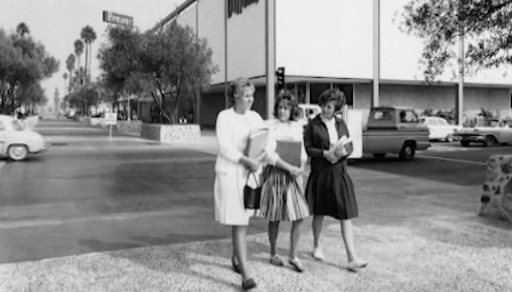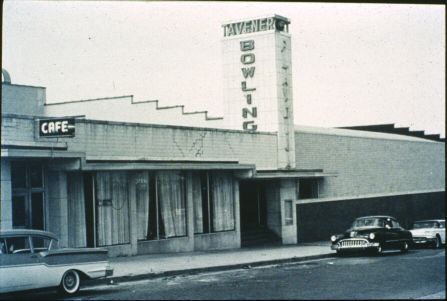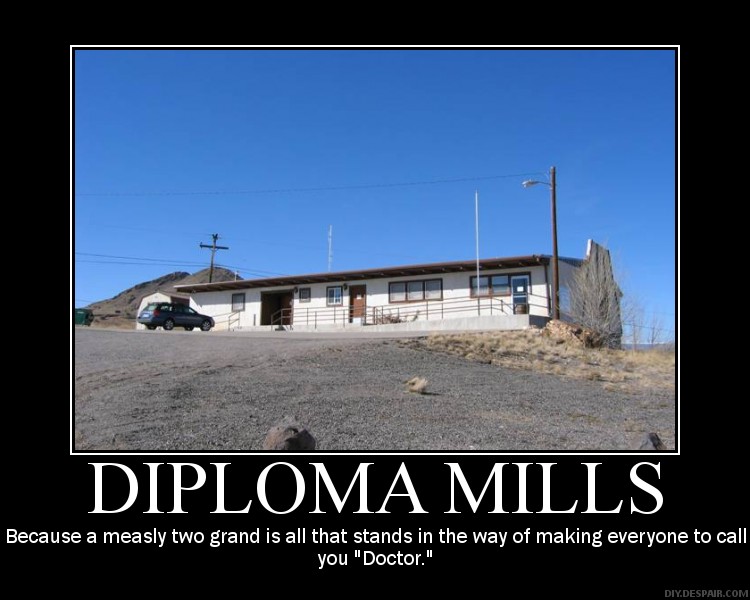- Joined
- Oct 12, 2012
- Messages
- 695
- Reaction score
- 115
Charter currently being scribbled on a napkin in the employee break room.
But an osteopathic medical school has already been started in a JCpenney store. western Univerisity COMP....

No COMP was in a JCPENNEY mall....I interviewed there in 1982....when I parked for the interview I couldn't believe what I was getting myself into....but they did a good job with what they had!
It was in the mall?! I need to hear more about this...

2) Regarding some of the pictures above: many D.O. schools, such as Touro and Western, have taken over old buildings like those on Mare Island, or shopping malls east of L.A., etc.., and converted them into schools or "universities." (is it sad, or just simply true?); and
Nothing beats a bowling alley. This was the first building purchased by TCOM and renovated for classroom use:

It later became the large building in the lower right quadrant of this pic:


That used to be the main building for COMP until a couple years ago, and it still holds the standardized patient department and the lecture halls for the pharm school. Prior to COMP it used to be a Buffums department store. There's actually a stock certificate located near the entrance. That sign in the back that reads "Pomona?" It was there until earlier this year when they removed that parking lot for student apartments (it might still be there... I'm a 4th year so I'm almost never on campus anyways).
As much as it pains me to actually defend Western...
P.S. what do you mean by this? As someone who is likely going to be at Western next year, is there anything I should know? PMs are fine if you don't feel like saying it here
P.S. what do you mean by this? As someone who is likely going to be at Western next year, is there anything I should know? PMs are fine if you don't feel like saying it here
The OP's post is obviously in jest but it has some relevant messages:
1) DO schools are expanding at an exponential rate;
2) Regarding some of the pictures above: many D.O. schools, such as Touro and Western, have taken over old buildings like those on Mare Island, or shopping malls east of L.A., etc.., and converted them into schools or "universities." (is it sad, or just simply true?); and
3) The expansion of D.O. schools is reminiscent of dental school expansion in the 1970's, whereafter many of the newly-minted dentists went bankrupt. That resulted in a massive contraction of dental schools and spots thereafter (note that interest in the profession plummeted such that the applicant:spot ratio became ~1:1).
Treat lightly.
I have a long list of issues regarding Western University, however, I won't feel comfortable discussing it until after I graduate and match. There are policies that make zero sense and only hurt students (such as 4th year rotations at core sites being required to follow the 3rd year schedule... which results in a vacation (didactic week for 3rd years) week every 3 months), the lack of accountability (Oh, that online quiz where we referenced question 2 on the follow up, but really meant question 5? See, the syllabus says we won't change grades, so we aren't actually responsible for how the quiz is written. The practical effect is small, but the mentality of "We're not responsible for what we do" is chilling), or the fact that anything, including curriculum delivery (the class of 2013 was sold on lectures and given PBL) can change because they want to, and with no warning (lecture to PBL isn't a small change, and being told in the middle of 1st year that 2nd year will be PBL isn't a warning worth a darn). Those are only the biggest ones, the lecture->PBL switch discussed in other threads before.
I agree with you. Medical schools, not only DO but also MD (look at the number of proposed schools), are growing at an unsustainable rate. There must be a cap to limit this. For those who are already in school, this expansion won't affect them much, but for future graduating classes I foresee a disaster. Hopefully, the class of 2018 won't experience the real pressure.
I'm pretty sure it will start with c/o 2017 and continue to get worse.
Why 2017? Is it the opening of the three new schools?
Thank you for the insight. Any tip from a soon-to-be an alumni is a greatly appreciated.
To my knowledge, WesternU doesn't have PBL (like the one at LECOM Bradenton). Instead, they have something called system-based learning. Am I correct?
And while 64 new AOA programs may seem like a lot, it's really not considering it amounts to about 150 slots; barely enough for one class. Then there's a new school plus 2 expansions this year, and I'm sure there'll be a school next year along with more expansions. All the while, tuition is rising yearly. And then these gluttons will tell you to go into primary care and not go into medicine for the money.
Well, you shouldn't go into medicine for money. If you can make it into medical school you can make a lot more money doing other things for less effort.
However good feelings doesn't pay the student loans or put food on the table.
Well, you shouldn't go into medicine for money. If you can make it into medical school you can make a lot more money doing other things for less effort.
However good feelings doesn't pay the student loans or put food on the table.
That's such a bs argument, no offense. Name one other pipeline profession averaging 200k (not for long). The only reason not to go into medicine for money is because student debt is outrageous.
That's what I used to say until I started thinking about graduating med school with 450K and residency with 500K+. Between the debt and the opportunity loss, you are going to be at least 700K behind. It will take you another 10 years after residency to catch up to someone who has been earning 70K right out of undergrad.
Read the last sentence of my post. Also, I would definitely not pursue medicine if I was going to be >200k in debt. You're nuts, but hey you gotta do what you gotta do.
That's such a bs argument, no offense. Name one other pipeline profession averaging 200k (not for long). The only reason not to go into medicine for money is because student debt is outrageous.
No offense taken. However I find it hard to believe that the average medical student wouldn't be successful in business or science. Sure, it's not a linear pipeline, but the fact that there's significantly less opportunity cost (i.e. not making money while in school) alone tips the scale.
That $200k+ allows for a very comfortable living even after loans, but that still doesn't make up for the hundreds of thousands of dollars not made during medical school and residency.
I'm going to disagree that the average student would be successful in science or business. I'd say they'd be making 100k/year avg throughout their career. Compare to 200k avg over a career.
Also, PHDs/MBAs aren't making squat while pursuing their education/training.
Actually I would think that residency/fellowship would pay similar to a newly working PHD, with debt of course.Physicians don't make squat their training either, and depending on the field, it's much longer training to finish residency/fellowship (yea for essentially working 2 back to back minimum wage jobs).
I'm going to disagree that the average student would be successful in science or business. I'd say they'd be making 100k/year avg throughout their career. Compare to 200k avg over a career.
Also, PHDs/MBAs aren't making squat while pursuing their education/training.
Well since were comparing it to physicians and scientists it's not much. My point is it's easier to make 75th % as a physician when comparing to scientists and businessmen. Ones a matter of hours worked and the other is innovation.TBF, 100k/year is actually a pretty successful career average in most parts of the country. It's not physician money, but it blows the average person out of the water.
Well since were comparing it to physicians and scientists it's not much. My point is it's easier to make 75th % as a physician when comparing to scientists and businessmen. Ones a matter of hours worked and the other is innovation.
It's PBL (the school prefers "small group-large group") in the sense that you get a set of cases with associated questions, get together in an required assigned small group (complete with sign-in), answer the questions using Harrisons (preferably... certain other websites were easier to access and quicker.), and then go to a lecture the next day where they answered the questions.
Looking at my interview booklet, they don't really mention small group stuff at all. I recall them going over very little of that during the interview.
How often do you meet in groups? If it's an everyday thing, that basically means mandatory attendance...
See it was a mall!!!!
That used to be the main building for COMP until a couple years ago, and it still holds the standardized patient department and the lecture halls for the pharm school. Prior to COMP it used to be a Buffums department store. There's actually a stock certificate located near the entrance. That sign in the back that reads "Pomona?" It was there until earlier this year when they removed that parking lot for student apartments (it might still be there... I'm a 4th year so I'm almost never on campus anyways).
COCA might as well start offering a drive-thru option soon if they keep up the current expansion plans for new diploma-mills in random locations:

Seriously, what's keeping them from doing this?
I would really like to see some numbers to back this claim. The class of 2018 has roughly 26000 students, MD and DO combined. Between the military (800 positions), AOA (2900 positions), SF/Urology (639 positions from what I could find), and the NRMP match (29,171 positions), there are 33,610 training positions, a few of which are pgy-2 only, leaving 30,831 pgy-1 positions. Many of the positions are transitional, but a transitional year is required for the pgy2 specialties anyway.No, but 3 new DO schools took students who would be matching for 2017.
There is some attrition in medical school, with the most accurate source I could find pegging 10 year total attrition rate at 4%. This leaves 1,040 less graduating students. And there are 2,779 pgy-2 programs in the acgme match, leaving an excess of only 1,319 pgy-1 spots on the acgme side. On the AOA side, at least 100 of those TRIs will likely go to people that want them in order to qualify for certain state's AOA internship requirement, leaving us with a total excess of 1,932 internship positions.4098 of those Acgme positions are internships (prelim medicine, surgery, and transitional years, and 613 of those 2900 AOA positions are internships.
I agree with you, though. The sky isn't falling...yet, muahahahahahah

That's such a bs argument, no offense. Name one other pipeline profession averaging 200k (not for long). The only reason not to go into medicine for money is because student debt is outrageous.
My calculations compensated for that. I only included intern years with a coupled pgy2 spot, which still left an excess of 4,000 residencies in the event of zero GME growth. That is more than enough positions to avoid the few hundred uncompetitive AOA primary care spots you seem to dread. There are 3,037 family practice acme positions and 875 AOA FP positions, so theoretically literally everyone could avoid FP if they so desired. IM at least opens up the chance of specialization and allows you to practice as a hospitalist if you are desperate to avoid primary care. We aren't doomed quite yet.Unless things have changed drastically, an intern or transitional year requires you to go through another interview process that year for a much smaller amount of 2nd year Resident spots. It is the last resort for many that didn't qualify for any other sort of residency spot and is often known as the year to clean up their act and portray themselves in a much better light and most PDs know this. Trust me, being absent more than your peers to travel all over for interviews is not the thing to do when you're trying to win their support and a good recommendation from them to get you out of your predicament.
Looks like someone checked how many total PGY2 spots have been available in the last few years. Those that grabbed one of the intern spots to have a paycheck while they improve their application, a trend I see rising sharply in the near future, are probably not in the population of the applicants to competitive specialties (much of the ROAD ones and neurosurgery) that require them, so the thousands listed probably wouldn't help too many people. From my point of view, it's much better to apply to any program once that you stay at for the duration of your GME.
If I were in the above situation, I would jump at the chance to be in one of the less competitive primary care residencies, and being forced to go to an AOA primary care residency is exactly what their endgame has been for decades; it's just much more obvious now.

I wish my education only cost $2k
Student debt at osteopathic medical schools is indeed outrageous. For the tuition I paid, a Gold Krugerrand and a bj from a Victoria's Secret model at the end of every semester wouldn't have been out of the question.
